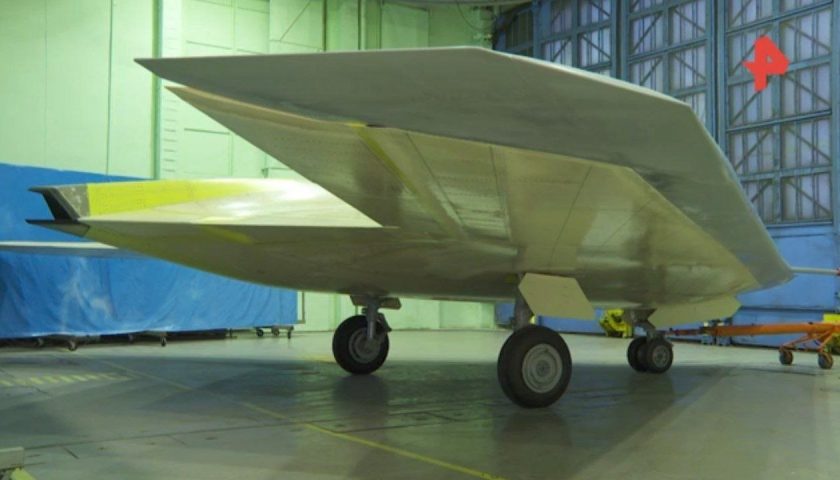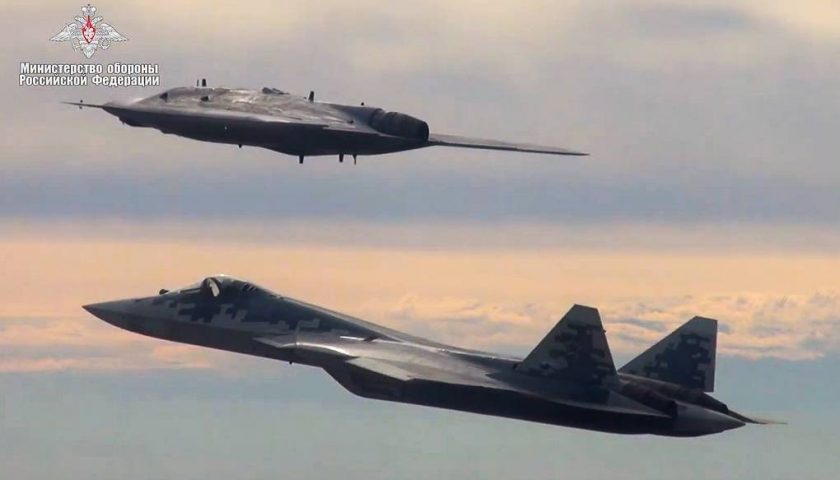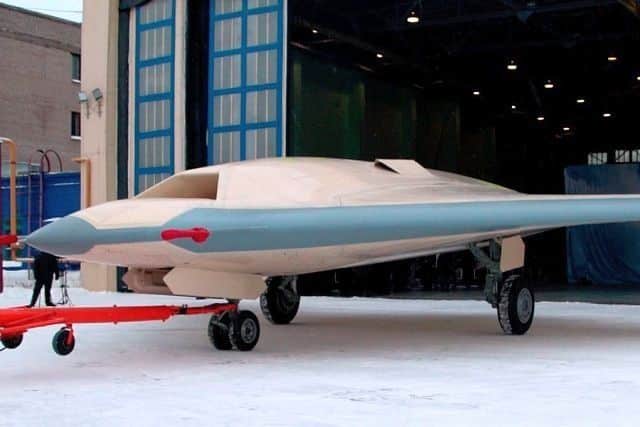Unlike the European air forces which plan to rely, in the decades to come, on piloted fighters and possibly on Remote Carrier airborne drones for hunting and attack missions, Russia has chosen to develop, to alongside its new generation Su-57 and Su-75 fighter jets and Grom airborne drones, a heavy combat drone destined to take a prominent place in the aerial inventory, replacing part of the fighters and attack aircraft lightweight, like the Mig-29 and the Su-25. This drone, designated S-70 Okhotnik B (fighter in Russian), was unveiled for the first time during the taxiing and flight tests in 2019. But its shape, and in particular its imposing reactor borrowed from the Su-30, let it hover some doubts as to its real discretion, even if Russian industrialists had insisted on the temporary nature of this architecture.
Photos showing the new version of the drone performing its first taxiing tests last week at the Novosibirsk site put an end to these speculations, showing a completely redesigned air inlet and jet exhaust nozzle for the turbojet engine. so as to simultaneously increase the radar stealth but also infra-red of the second prototype, which should begin, in the coming weeks, a test phase including in flight. Thus adorned, the Okhotnik B 14 meters long for 19 meters of wingspan, and whose maximum takeoff weight reaches 20 tons, that is to say that of an average fighter, will be able to perform deep strikes in the opposing device, but also cooperate with piloted fighters, in particular the Su-57 which alone will be able to control 4 of these drones, by the end of the decade.

The Okhotnik B does not approach a hunter only by its dimensions and its mass, it also has its performance, with a high subsonic cruising speed, and above all an impressive range of more than 3500 km, and two weapon bunkers designed to accommodate the same ammunition as that of the Su-57 and the future Su-75, which will notably be able to accommodate the airborne version of the Tzirkon hypersonic anti-ship missile, the Larchinka-MD, just like the Gremlin missile, or GZUR, compact version of the Kinzhal hypersonic missile. The conjunction of unobtrusive radar and infrared optimized drones, and hypersonic anti-ship and air-to-ground missiles, will give the Russian air forces a significant tactical advantage, and this in a relatively short timeframe that does not allow the European air forces. to protect themselves effectively in the short term.
In fact, with the S-70, the Russian aeronautics industry is clearly regaining a dominant position in the field of combat drones, despite a certain initial delay vis-à-vis China and the United States. The drone must indeed reach its first operational capacities by the middle of the decade, date on which it must begin to be delivered to the Russian air forces, concomitantly to the Su-57 which will ensure the control. This is a schedule similar to that of the MQ-25 Stingray of the US Navy, but also of the Chinese GJ-11, each one being however specialized in different missions. On the other hand, the contrast is to say the least striking with the efforts made in this field by the European industry which does not develop to date no program comparable to those of the 3 world superpowers, and which by 2027, will just manage to supply the first Euromale systems, a MALE drone which seems to be a generation behind the American, Russian and Chinese models which will enter service at the same time.

One can wonder how long Europeans, including France, will continue to design their programs to modernize their defense tools on the basis of industrial and economic needs, and without taking into account the very rapid evolution of military capabilities. which Russia has and will have, both quantitatively and qualitatively. Armata, Tzirkon, Su-57, Okhotnik B, S-500 .. so many systems which have no equivalent or no parade in Europe or even across the Atlantic for the most part, and which should come into service within a few years to come, leaving more than ever the Europeans at the mercy of the Kremlin, and the goodwill of the White House to ensure their defense. Isn't it time now to focus on the Defense of Europe and Europeans, rather than chasing a very hypothetical Europe of Defense?


[…] the capabilities of manned combat aircraft. Russia, for its part, is jointly developing the S-70 Okhtonik-B long-range heavy stealth combat drone intended to accompany the Su-57s and, it seems, replace light fighters within the [ …]